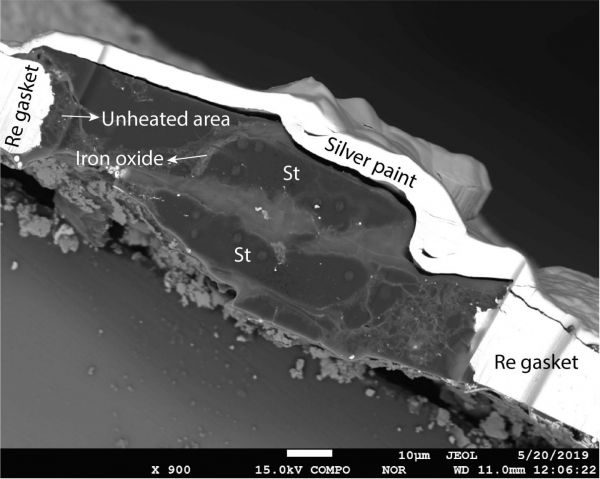Every school child learns about the water cycle—evaporation, condensation, precipitation, and collection. But what if there were a deep Earth component of this process happening on geologic timescales that makes our planet ideal for sustaining life as we know it?
New work published in the Proceedings of the National Academy of Sciences by Carnegie’s Yanhao Lin and Michael Walter—along with former Carnegie scientists and ongoing collaborators Ho-Kwang “Dave” Mao and Qingyang Hu of the Center for High Pressure Science and Technology Advanced Research Shanghai and Yue Meng of Argonne National Laboratory—demonstrates that a key mineral called stishovite is capable of storing and transporting large amounts of water even under extreme conditions like those found in Earth’s lower mantle.
This is important, because it shows that substantial quantities of water could be present farther into the mantle than previously thought, indicating that a whole-mantle water cycle is possible.
“To get down into the mantle, water must be incorporated into minerals on the surface and then be stably maintained in those structures under the conditions found deep inside the planet,” explained lead author Lin.
Read more at Carnegie Institution for Science
Image: A tiny sample of stishovite used by the researchers in the lab. (Credit: Yanhao Lin)


